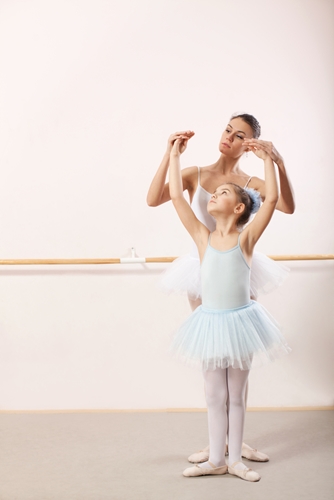If your beginner dance classes are growing in size but you’re not ready to bring on another instructor, you may be considering asking one of your older, trusted students to become an assistant dance teacher. It’s a common practice throughout the industry to have older dancers assist in preschool and beginner classes to keep kids focused and complete certain administrative tasks.
However, just like with any other business decision, there are both pros and cons of bringing on assistants to help out in your classes. Here are some of the considerations you should take into account when you’re thinking about creating this new role in your studio.
Pro: They’re a Big Help
The most obvious benefit of having an assistant dance teacher is the relief he or she can provide an overburdened instructor. Dance Advantage explained that assistants are frequently responsible for taking attendance, escorting students to the bathroom, handing out props, leading warm ups, keeping kids focused and answering basic parent inquiries. Naturally, these duties will vary between studios depending on what your teachers need help with. More advanced students sometimes also aid in correcting dancers’ form and technique during class, but it’s important that you keep in mind that an assistant’s duties should be directly related to his or her compensation.
Con: You’ll Need to Compensate Assistants
You may think that teaching assistants are the way to go if you don’t have the funds to hire another instructor, but you shouldn’t assume students will work for free. The Dance Teacher blog explained that while many studios don’t pay students monetarily, they implement some other form of payment to compensate assistants. This could be with free lessons, reduced tuition, free merchandise or even just a weekly stipend. Before you start recruiting students to be assistants, make sure you figure out what you’re willing to offer in return for their services.
Pro: The Role Benefits Students
Having an assistant dance teacher in the classroom is a big help to teachers and studio owners. Dance Studio Life noted that teacher’s assistants are able to develop leadership skills, get experience working with children, improve their own dance knowledge and build up their resumes. The role may be especially helpful for students who are considering pursuing a career as a dance instructor, as it shows them what life is like on the other side of the classroom.
Con: They’ll Need Training
The students you recruit as assistants may be eager and ready to take on their new responsibilities, but chances are that they’ll need a fair bit of training. Most students will be a little awkward in their first few months of assisting, and you’ll be able to get them comfortable more quickly if you have some sort of training system. This will require some work on your part before your teaching assistants are living up to their full potential.
Pro: It Can Be a Great Selling Point
If you’re looking for ways to set your studio apart from competitors, having a helping hand in each classroom is definitely a selling point. Once you have training and capable assistants, you can explain to prospective parents that students get as much individual attention as they need and won’t feel lost if they’re ever in a large class. It may seem like a small difference, but it can really be significant when you’re located in an area with a saturated dance market.



